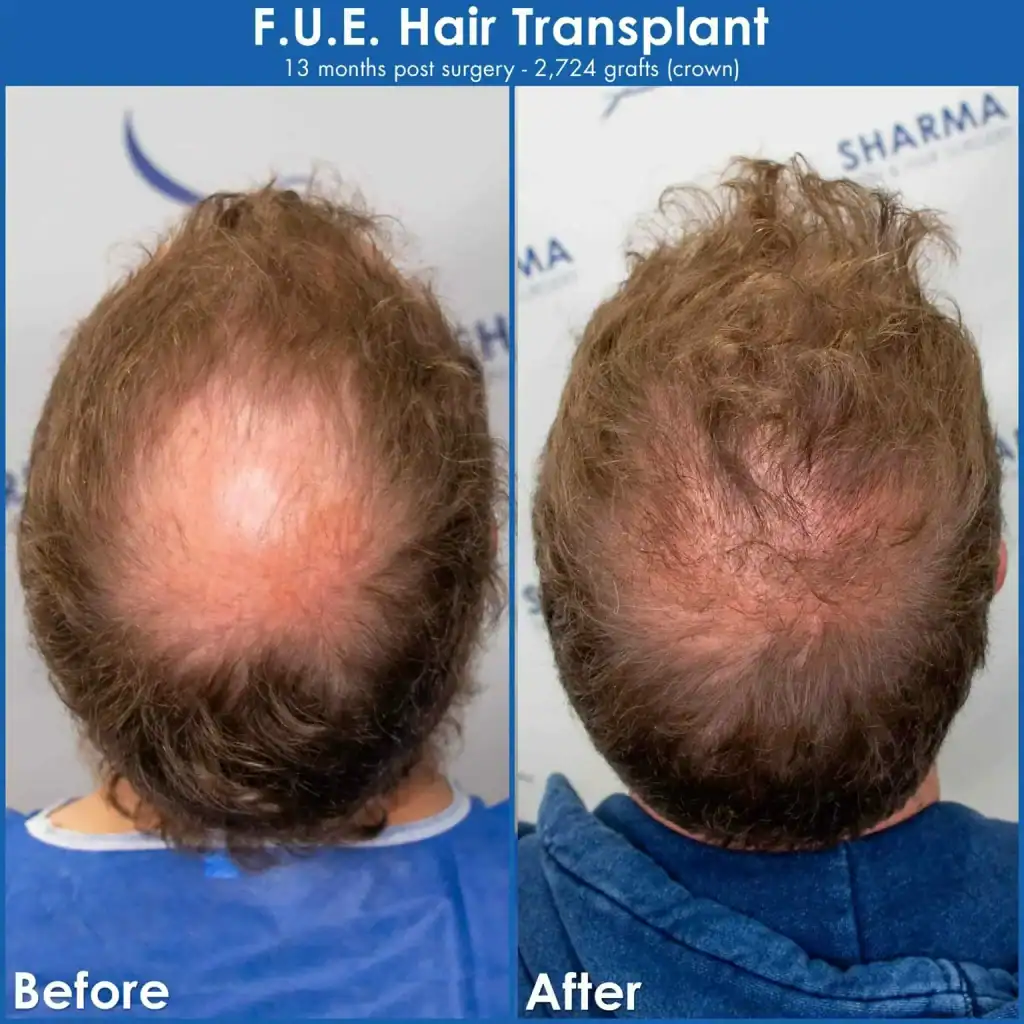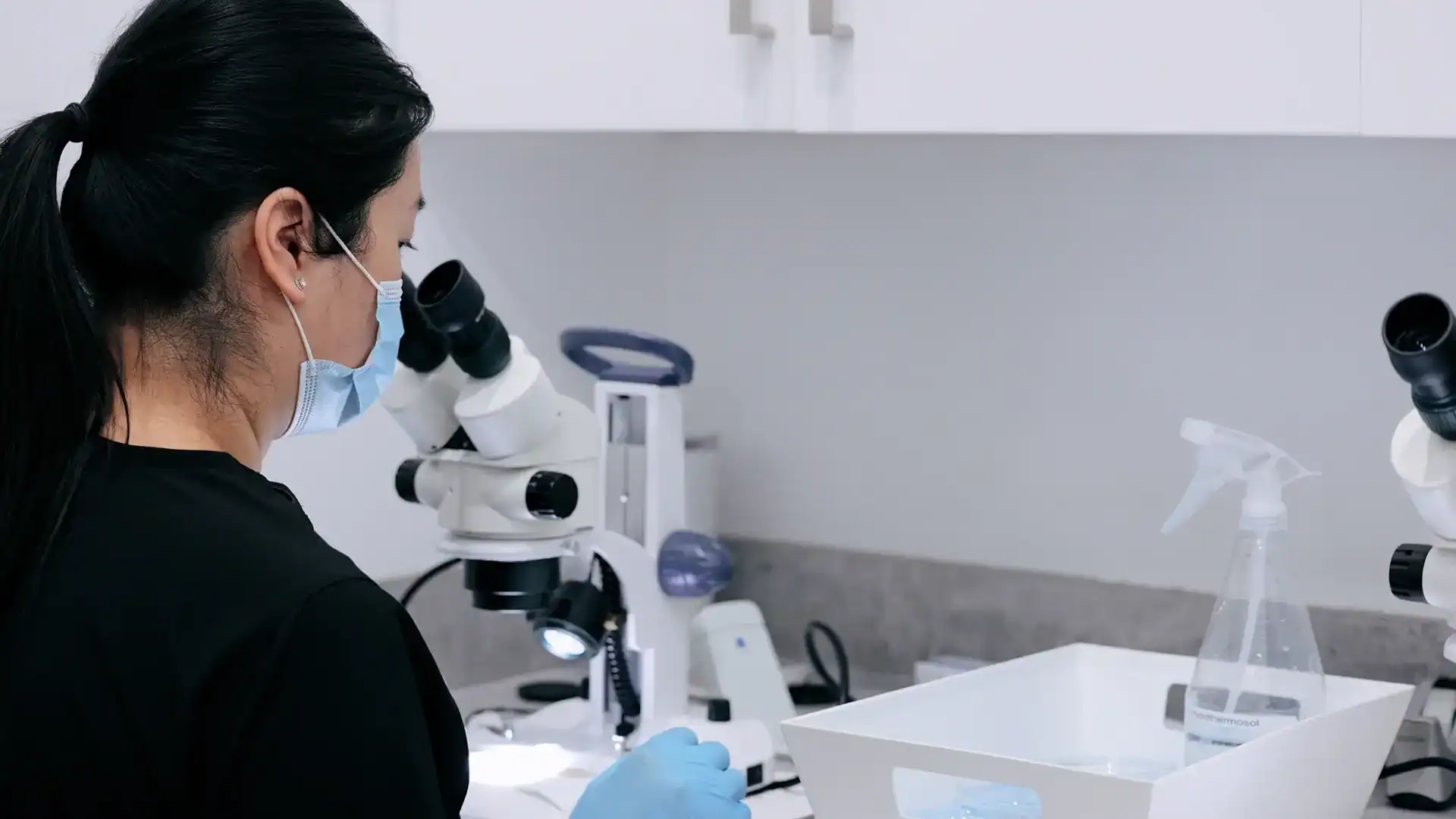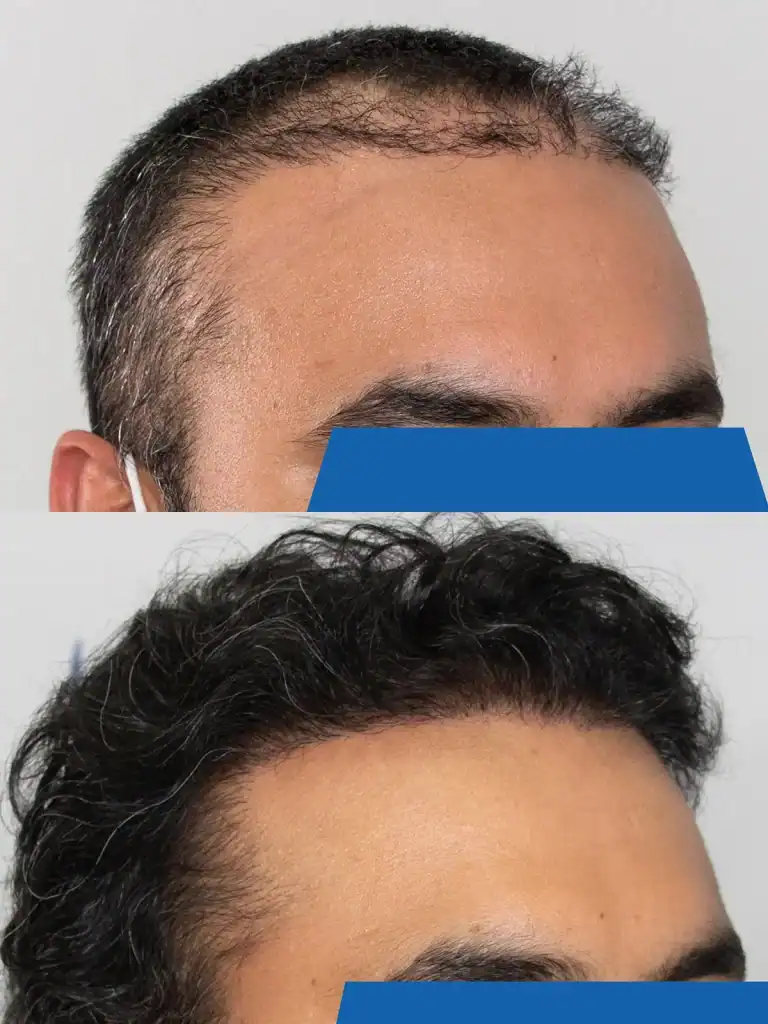92% of hair loss found at the crown is related to Androgenic alopecia for both men and women. We can help.






The crown is located at the very top of your skull and is the topmost part of the head. The origin of the word is an indirect translation of wreath and head from the Latin phrase ‘Corona Capitis‘.
Sometimes referred to as the vertex this area is the second most prevalent area Dr. Sharma treats for hair loss. This area of hair loss can be anywhere from a small quarter sized visible gap in the hair to a large generalized thinning which slowly spreads outwards from the center.
Many of our patients report using all sorts of technologies and products to prevent anyone from knowing about hair loss and it clearly affects how they feel about themselves. Luckily, with proper treatment (ideally completed sooner than later), we can almost completely fill in the crown with a moderate amount of grafts in a single hair transplant session. When left for too long, your options become more limited. Treating a very large area may require multiple sessions – this means more time spent recovering and of course, a higher cost.






Recovery following surgery comes with a bit of work. At Sharma Skin & Hair Surgery, we ask patients to follow a very strict post-care routine which involves the use of a custom solution. This solution contains Hypothermosol and Saline and must be applied to the scalp at regular intervals following surgery. The point of this spray is to promote growth and speed up recovery times. The saline is a natural disinfectant which further helps to reduce the chances of infection at the recipient site. The recovery period is a minimum of 5 days. Most patients will return to work on day 8 following surgery.

Take a moment to review the results of Dr. Sharma’s previous patients. You can browse our Before and After Gallery, or review patient testimonials from other people who chose Dr. Sharma as their Edmonton hair transplant surgeon. All of these results were achieved at our clinic here in Edmonton.



It depends on which procedure we are doing and which area you are referring to. For the F.U.E. procedure your hair will grow back to normal at the donor site (back of the head) within 2-4 weeks.
The recipient area (where we are transplanting to) normally takes around 3-6 months to start coming in evenly. With about 70% growth by the one-year mark. It takes a total of 18 months to see the full maturity of your transplanted grafts.
The cost of a hair transplant depends on the procedure type and the number of grafts transplanted. Dr. Sharma performs the procedures manually in order to ensure the most natural look possible. Hair transplant procedures generally start at $6,000.
Even though hair loss is an unavoidable experience for many people, it is possible to turn back the clock so you can regain a youthful appearance. Dr. Sharma has a keen artistic eye and years of experience creating natural hairlines. Dr Sharma’s methods are designed to create results that look like you never had a procedure in the first place.
If you are ready to feel confident with a full head of hair, we are here to assist. Contact us at Sharma Skin & Hair Surgery to schedule a consultation and learn more about the results you can expect from this modern treatment. View some of our results for crown hair transplants and hairline transplants.
A local anesthetic block is used which is very comfortable (the patient can even watch a movie if they so wish during the procedure).
Post-procedure, patients seldom require anything stronger than a simple analgesic such as Advil.
Patients are then followed up personally by Dr. Sharma. He will always consult with the patient the day following the surgery and ensure they are sent home with full after-care instructions and contact telephone numbers for the clinic (24 hours per day for the first three days post-surgery).
Your scalp will be swollen, tight, and achy for the first few days after treatment. It is common to experience temporary scabbing during the healing process.
FUE transplants are preferred over FUT to minimize scarring. With FUE, the donor area will have red pinpricks where the follicles are removed. These small marks heal over a few days and leave micro scars. These are extremely small, discoloured flecks, that are easily hidden once the surrounding hair begins to grow back.